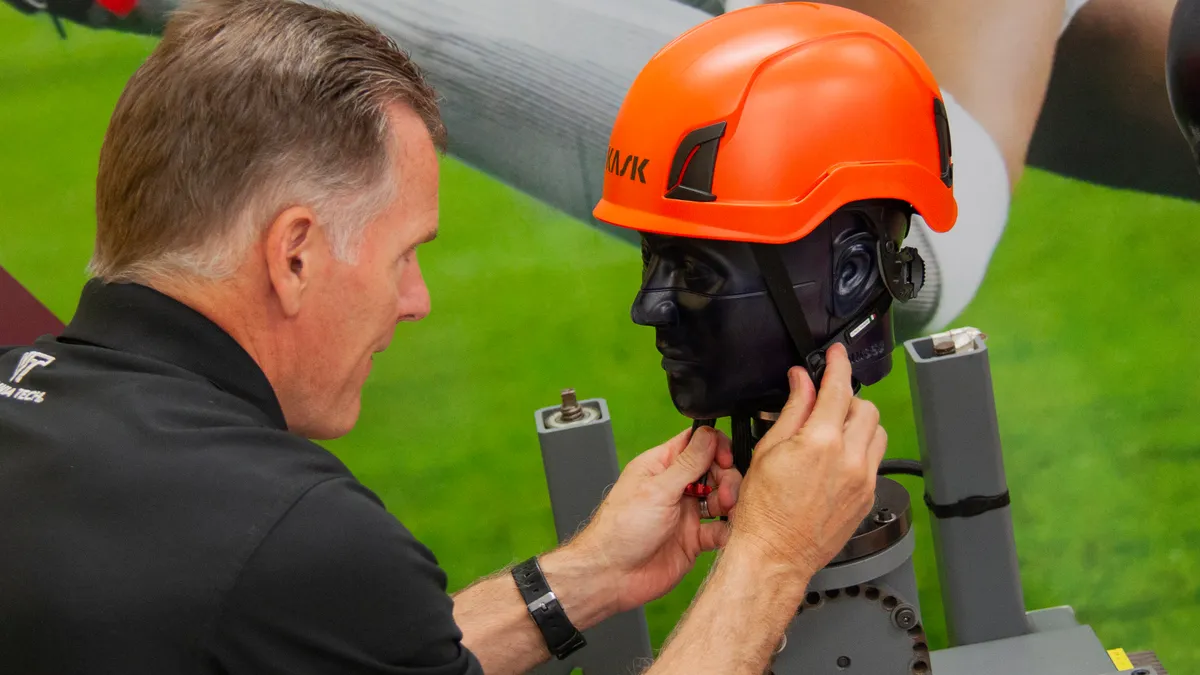Dive Brief:
- Researchers at Virginia Tech are looking for ways to better protect noggins on the jobsite. After nearly two decades of studying and providing safety ratings of athletic helmets, the Blacksburg, Virginia, university’s Helmet Lab will begin developing a grading system for construction helmets.
- The 18-month study is designed to better understand the kind of head impacts that workers experience on jobsites and which helmets are best at protecting them.
- Researchers will first record information on head trauma on the jobsite from injury reports and studies from groups like the Centers for Disease Control and Prevention, then attempt to recreate those collisions in the lab before analyzing which helmets best protect against the most common types of head injury.
Dive Insight:
Helmet technology in sports has gotten increasingly better, according to Barry Miller, director of outreach and business development for the Helmet Lab. Millions of data points collected by researchers from sensors in Virginia Tech athletes have helped the lab understand how they hit their heads, and then develop ratings for which helmets best protect athletes from those collisions.
For example, the highest-rated varsity football helmet has a Summation of Tests for the Analysis of Risk — or STAR — value score of 0.52; that number represents the number of concussions a wearer could expect in an average season of football where they sustain 420 helmet collisions, Miller told Construction Dive.
Soon, Miller said, the Helmet Lab wants to have those same ratings for work helmets.
Leaders in construction — such as Clark and DPR — have switched from hard hats to helmets, with some making the change years ago. The traditional headgear only protects workers from blows directly to the top of the head, while helmets protect workers’ heads from multiple angles.
When it comes to rating construction helmets today, however, there’s usually just one metric: if the headgear can withstand a certain amount of force that could cause death, from a fall or other contact.
The Virginia Tech research is more concerned with the head trauma someone can encounter day to day, and the best ways of protecting a worker’s head from multiple types of injury.
To get a sense for those injuries, Miller said, the lab is working on collecting data about head collisions on the job. The problem is what information is in the available data.
“Injury reports say ‘I fell and I hit my head.’ OK. Well, where? How hard? Did you hit your back first?” Miller said.
The best type of information that the lab can use to recreate head injuries is video, Miller said. Contractors can help by supplying any visual aid to indicate how workers fall and hit their heads, which can inform researchers how to better test helmets in the lab.
Over 20 years, head protection in sports has gotten a lot better, Miller said. The goal is to keep expanding that.
“A five-star helmet today is not the same as five-star 10 years ago. It just keeps evolving. And we want that,” he said.














